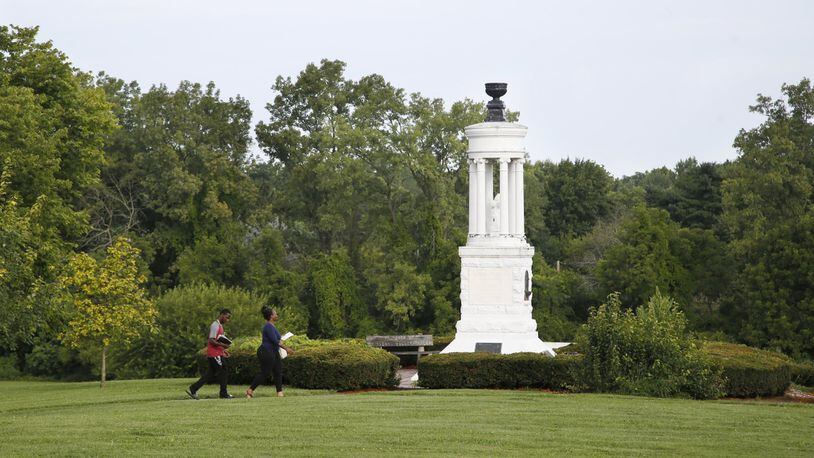The two schools are also “exploring opportunities” to merge some of their academic offerings, food services, library services and information technology, according to the release.
» RELATED: Cash-strapped Wilberforce University trying to raise $2M by June 30
“I have always encouraged positive, collaborative higher education partnerships in Ohio,” said Randy Gardner, chancellor of the Ohio Department of Higher Education. “In this spirit, I congratulate Central State and Wilberforce as they work together to achieve greater efficiencies while enhancing academic opportunities for students they are privileged to serve.”
The idea of historically black colleges and universities merging operations or campuses is not an unfamiliar concept.
In fact, talk of the two colleges merging in some part dates back to at least the 1990s, the Dayton Daily News reported.
In March 1997, the state legislature was considering requiring Central State to close or merge with another school because of financial issues. Wilberforce University and Ohio State University were both considered as possible options to merge with.
The idea was eventually knocked down by Wilberforce University’s then-president John L. Henderson in a May 1997 commencement speech.
Last year, the chancellor of the University System of Georgia proposed a plan to merge two HBCUs, including Albany State and nearby Darton State College, according to the Thurgood Marshall College Fund.
Locally, Franklin University in Columbus bought Urbana University in 2014. Following the merger, Urbana became a Franklin University branch campus in 2017.
A Central State spokeswoman declined to comment Thursday. This news organization has also reached out to a spokesperson for Wilberforce University.
The two universities actually started off as one. Central State began as the "Combined Normal and Industrial Department" at Wilberforce University before the state legislature voted in May 1951 to separate it into its own institution, according to the Ohio History Connection.
» NEWS: New festival to celebrate Dayton’s aviation heritage
“Central State University and Wilberforce University students will continue to engage on their respective campuses but can look forward to shared and dynamic learning and student engagement experiences,” states a release from Wilberforce.
Both Wilberforce University and Central State have have garnered attention recently for campus housing.
In January, multiple Wilberforce students were displaced after a pipe burst and damaged rooms in Henderson Hall, Cynthia W. Roseberry, vice president for institutional advancement said at the time. All displaced students have been housed in the Ramada hotel in Xenia, Roseberry said.
Central State announced in 2018 that it was building a set of new $24-million student apartments on its campus.
Central State and Wilberforce are also both trying to rebound from financial issues of the past few years.
Wilberforce ran an operational deficit of more than $19 million in fiscal year 2017 and was placed on probation by the Higher Learning Commission. The HLC is a regional accrediting body and is responsible for accrediting colleges in 19 states.
Central State was removed from state fiscal watch in March 2017. CSU was first placed on fiscal watch in 2015, after it fell below a state threshold measuring financial health two years in a row.
The state measures every public college’s fiscal health with something called a “Senate Bill 6 score,” an annual rating of 0 to 5. Any school that falls below a 1.75 two years in a row is put on notice.
Central State scored a 1.3 in 2013 and a 1 in 2014. To get removed from fiscal watch, a university must meet a rating of at least 2.4 and must also re-mediate all conditions that led to its financial troubles.
“No one likes to be on fiscal watch,” CSU president Cynthia Jackson-Hammond said in 2017. “But, it was an opportunity for us to regroup, rethink, re-strategize and re-position ourselves for a better future.”
About the Author
